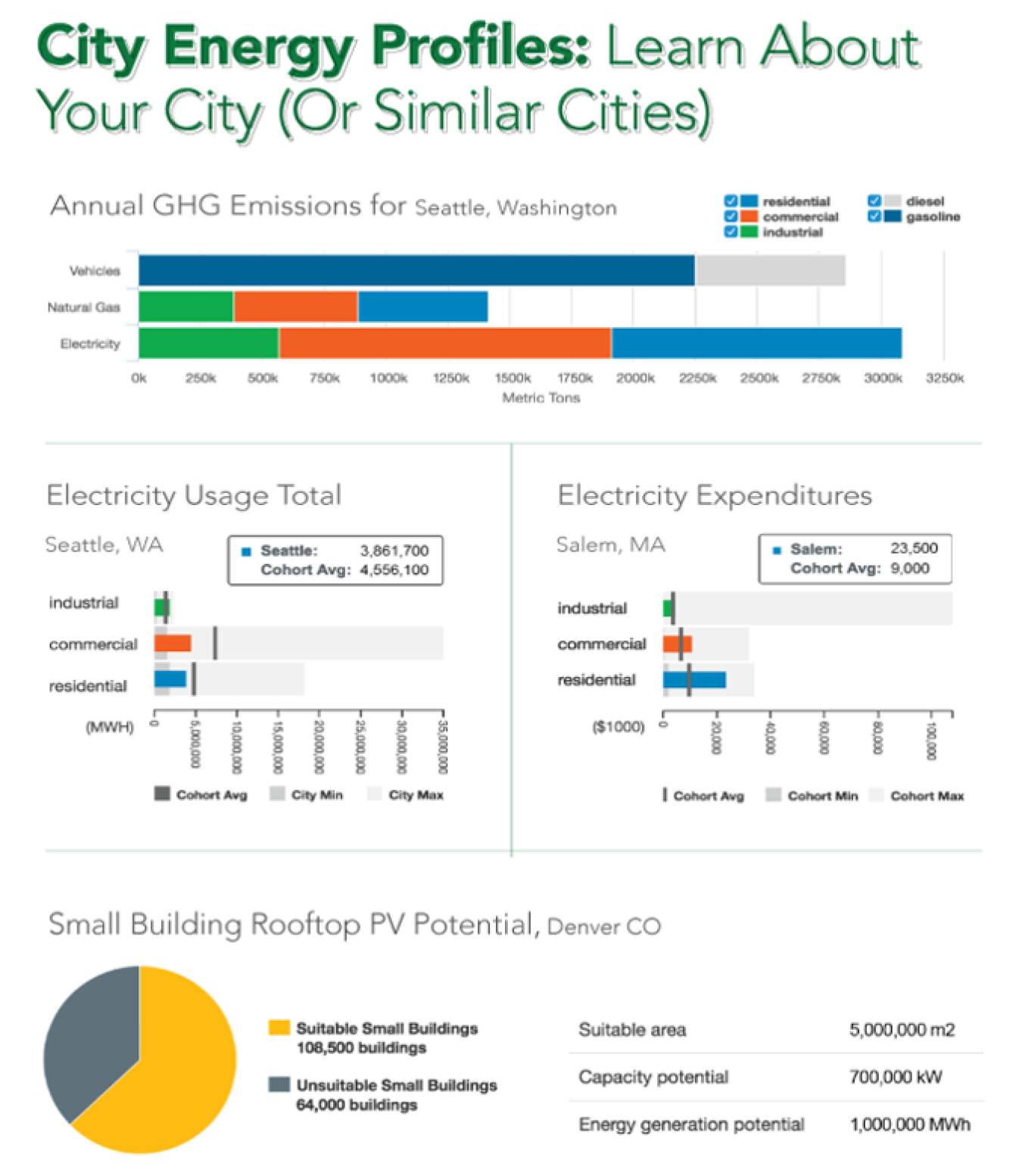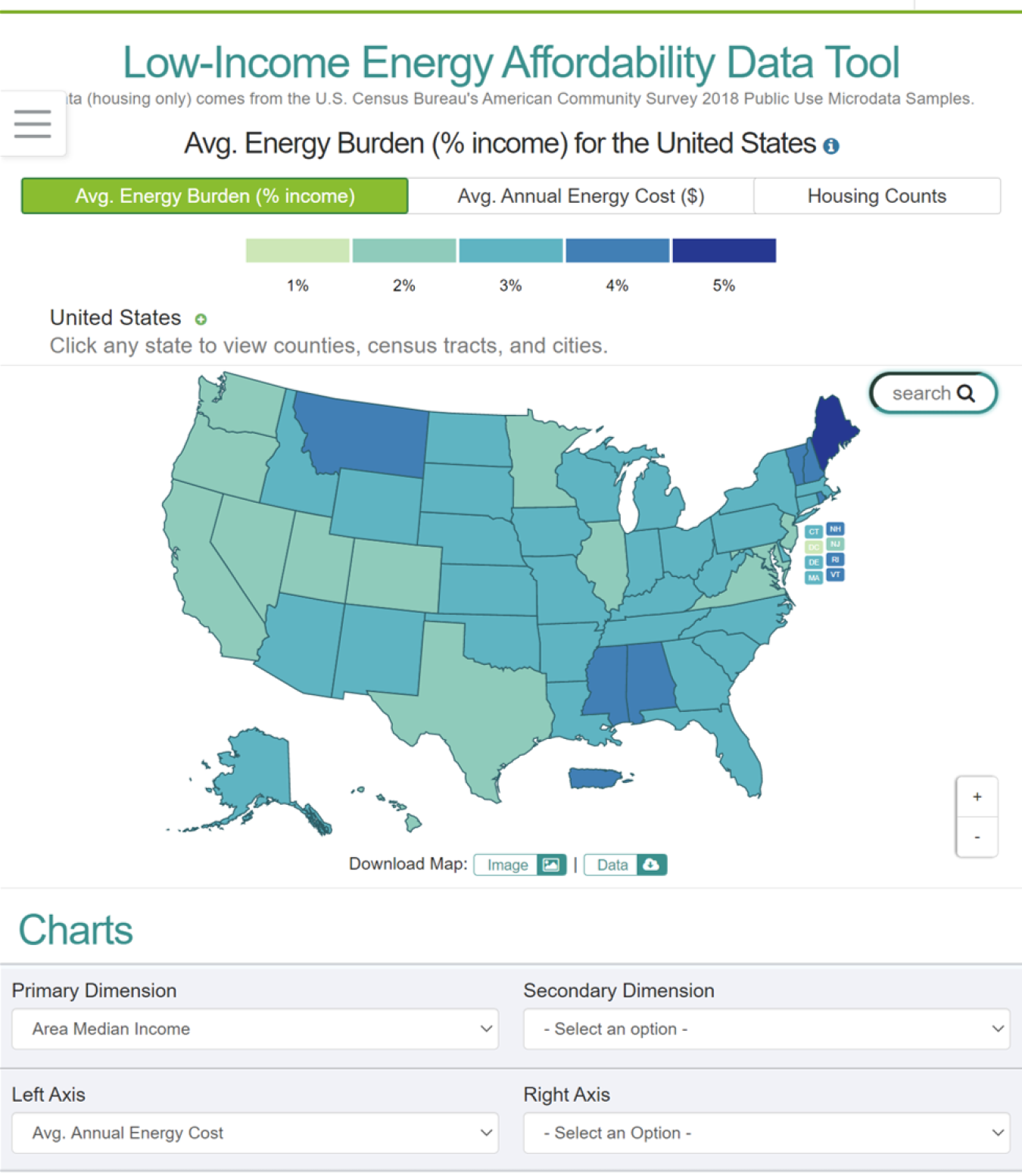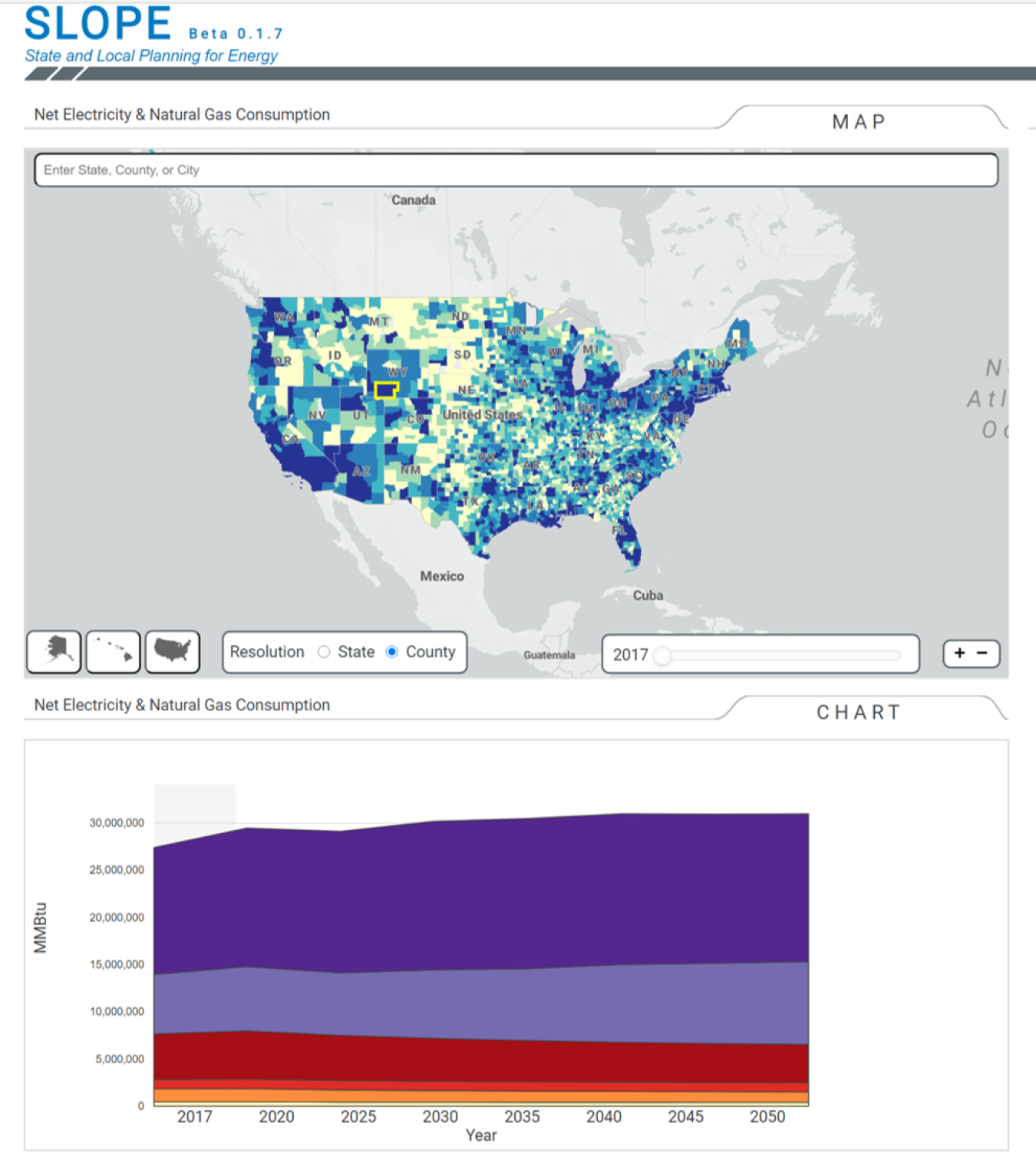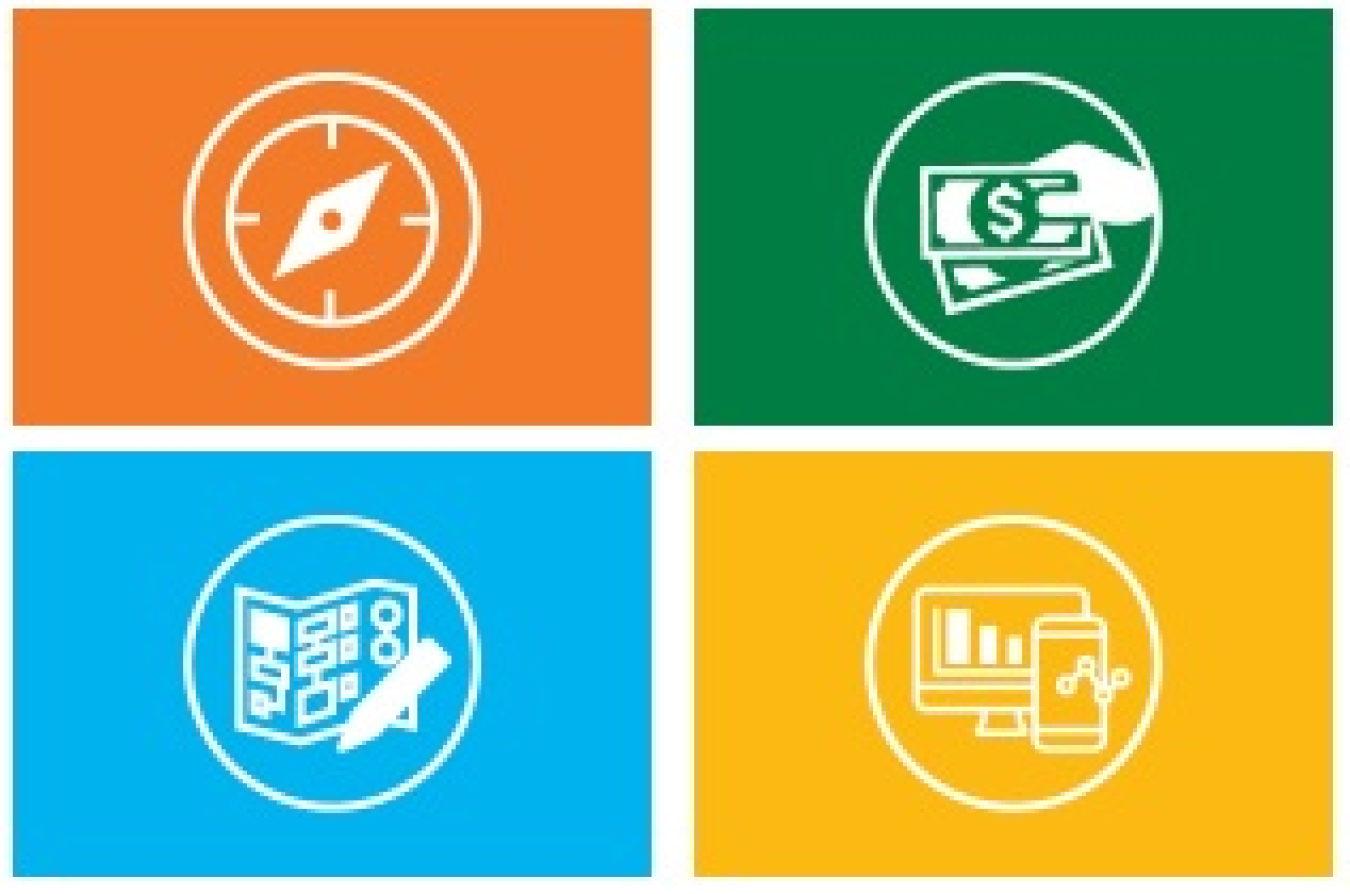Cities, counties, and states can use the resources below to make informed decisions on local energy policies, programs, and projects.
Explore the following energy analysis tools and data:
State and Local Energy Profiles
Learning about energy usage in your state or local jurisdiction and similar jurisdictions can lead to more strategic energy decisions and can help communities plan for and achieve clean energy goals. To create the State and Local Energy Profiles, the U.S. Department of Energy and National Renewable Energy Laboratory compiled comprehensive energy use and activity data for 23,400+ cities and 3000+ counties.
State and Local Energy Profile include summary data and charts for the following:
- Greenhouse gas emissions
- Electricity and natural gas consumption and expenditures
- Vehicle miles traveled, fuel consumption, and registration by fuel type
- Renewable energy procurement options
- Residential and commercial building stock
Learn how cities are using energy data.
Explore the State and Local Energy Profiles data.
See a fact sheet for the LEAD Tool.
Low-Income Energy Affordability Data
The Low-income Energy Affordability Data (LEAD) Tool is an online, interactive platform that allows users to build their own national, state, county, city, or census tract profiles. LEAD provides estimated low-income household energy data based on income, energy expenditures, fuel type, and housing type. Users can create and save their own profile and make side-by-side comparisons with other geographies. Users can also download visuals and data associated with their selections.
The LEAD Tool offers the ability to select and combine household characteristics (income group, building year and type, and heating fuel type) and geographic areas (state, county, city and census tract) into customized groups so users can see their cohorts and areas of specific interest.
Access the tool and read the cases studies here.
See an overview of the SLOPE Tool.
State and Local Planning for Energy
The State and Local Planning for Energy (SLOPE) tool aims to improve data-driven state and local energy planning by integrating and resolving planning-relevant data at jurisdictional levels. SLOPE Beta integrates data on energy efficiency and renewable energy opportunities.
Representative technologies are provided for renewable energy sources consistent with Annual Technology Baseline modeling. A range of technology options exist beyond the representative technologies and vary by cost and location. This platform contains high-level, modeled data to help inform planning but should not replace detailed analyses of technology options and actual costs. Improvements and upgrades supported by multiple Department of Energy (DOE) Office of Energy Efficiency and Renewable Energy offices are planned in 2020 and beyond to work toward a platform delivering comprehensive, integrated clean energy data that supports state and local decision making and deeper analysis.
Access the SLOPE Beta Tool here.
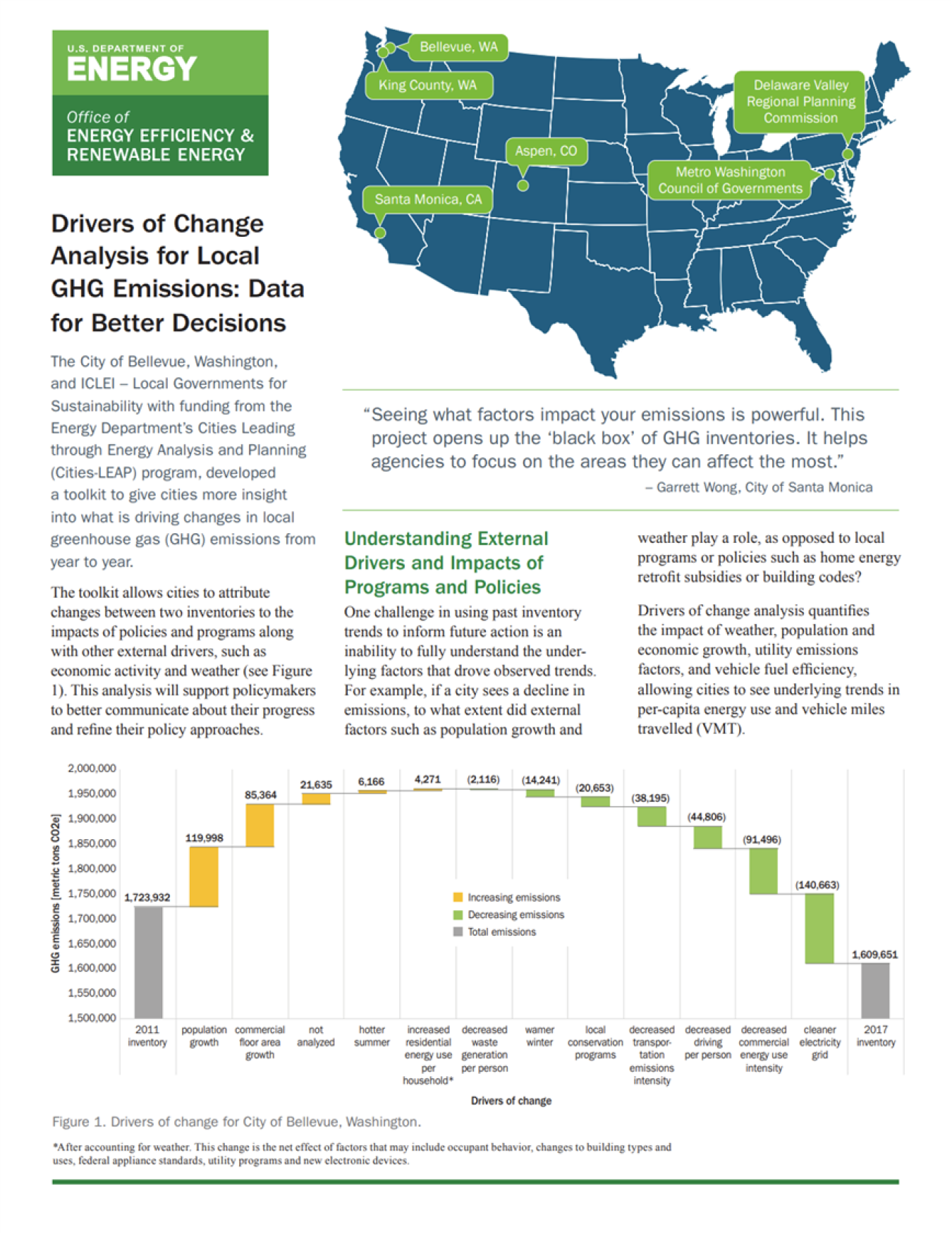
Learn more about Drivers of Change Analysis.
Drivers of Change for Local Greenhouse Gas Emissions Toolkit
The City of Bellevue, Washington, and ICLEI-Local Governments for Sustainability with funding from the Energy Department’s Cities Leading through Energy Analysis and Planning project, developed a toolkit to give cities more insight into what is driving changes in local greenhouse gas (GHG) emissions from year to year.
One challenge in using past inventory trends to inform future action is an inability to fully understand the underlying factors that drove observed trends. For example, if a city sees a decline in emissions, to what extent did external factors such as population growth and weather play a role, as opposed to local programs or policies such as home energy retrofit subsidies or building codes?
Drivers of change analysis quantifies the impact of weather, population and economic growth, utility emissions factors, and vehicle fuel efficiency, allowing cities to see underlying trends in per-capita energy use and vehicle miles travelled (VMT).
Access the toolkit here.
State and Local Energy Efficiency Action Network
The State and Local Energy Efficiency Action Network (SEE Action) is a state- and local-led effort facilitated by the U.S. Department of Energy and the U.S. Environmental Protection Agency to take energy efficiency to scale and achieve all cost-effective energy efficiency by 2020.
SEE Action offers resources, discussion forums, and technical assistance to state and local decision makers as they provide low-cost, reliable energy to their communities through energy efficiency.
Visit the SEE Action website.
State and Local Solution Center
The State and Local Solution Center provides resources to advance successful, high-impact energy efficiency and renewable energy policies, programs, and projects.
Learn how to develop an energy plan, design and implement energy programs, pay for energy initiatives, and access and use energy data.
Visit the State and Local Solution Center.
Return to the EERE Energy Analysis page.

